A light in extensible thread passes over a small frictionless pully. Two blocks of masses m=kg and M=3kg respectively are attached with the thread as shown in the fig. The heavier block rests on a horizontal surface. A shell of mass 1kg moving upward with a velocity 10m/s collides and sticks with the block of mass 'm' as shown in the fig at t=0. If the long inclined plane is smooth.
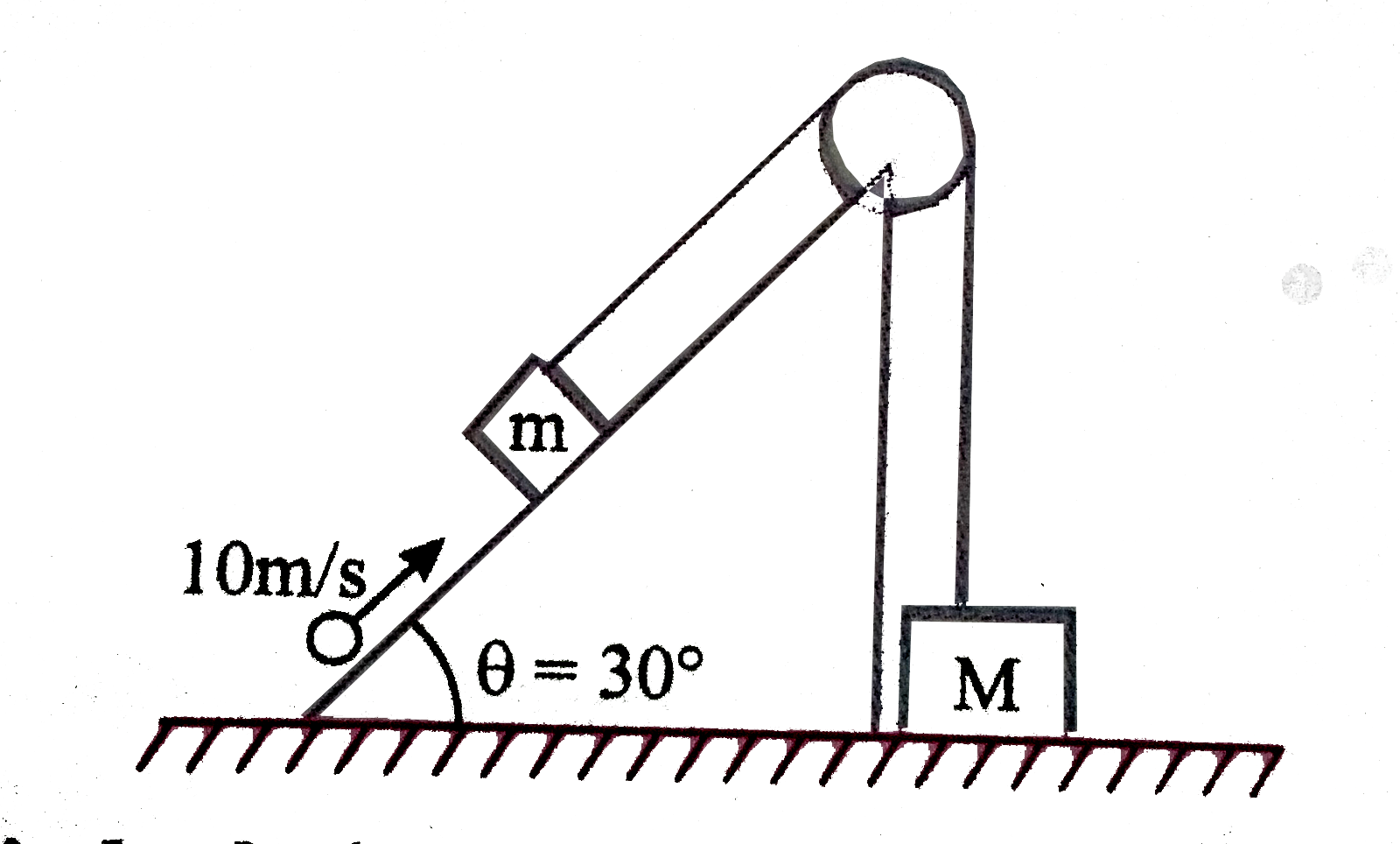
Find velocity of (m+shell) just after collision.
5m/s
10m/s
2.5m/s
7.5m/s
The correct Answer is:A
(m+1)u=1×10
u=5m/s
So, the combined body will move up the plane and after a certain time it will come back to its initial position with a velocity 5m/s and time t1=2s. Now M is jerked into motion thread become taut, a sharp impluse is exerted by thread to M and combined body.
So (m+1)vo=(m+1)u−Mvo
∴Vo=2m/s
Now, M will move with retardation from free body diagrams
T−(m+1)g,sin30=(m+1)a
Mg−T=Ma
a=4m/s2
Maximum height ascended by M
v2−u2=2as
0−4=−2(4)×H
H=12m
time taken to reach that height
v=u+at,0=5−4t,t=0.5s
Total time =t'+t=2+0.5=2.5S
Topper's Solved these Questions
- COLLISIONBOOK - NARAYNACHAPTER - COLLISIONEXERCISE - Subjective type Questions
9 Videos
- COLLISIONBOOK - NARAYNACHAPTER - COLLISIONEXERCISE - Level-I (H.W)
52 Videos
- COLLISIONBOOK - NARAYNACHAPTER - COLLISIONEXERCISE - Multiple Answer
11 Videos
- CIRCULAR MOTIONBOOK - NARAYNACHAPTER - CIRCULAR MOTIONEXERCISE - LEVEL II(H.W)
51 Videos
- FRICTIONBOOK - NARAYNACHAPTER - FRICTIONEXERCISE - Passage type of questions I
6 Videos
Similar Questions
Two blocks of masses of 40 kg and 30 kg are connected by a weightless string passing over a frictionless pulley as shown in the figure.
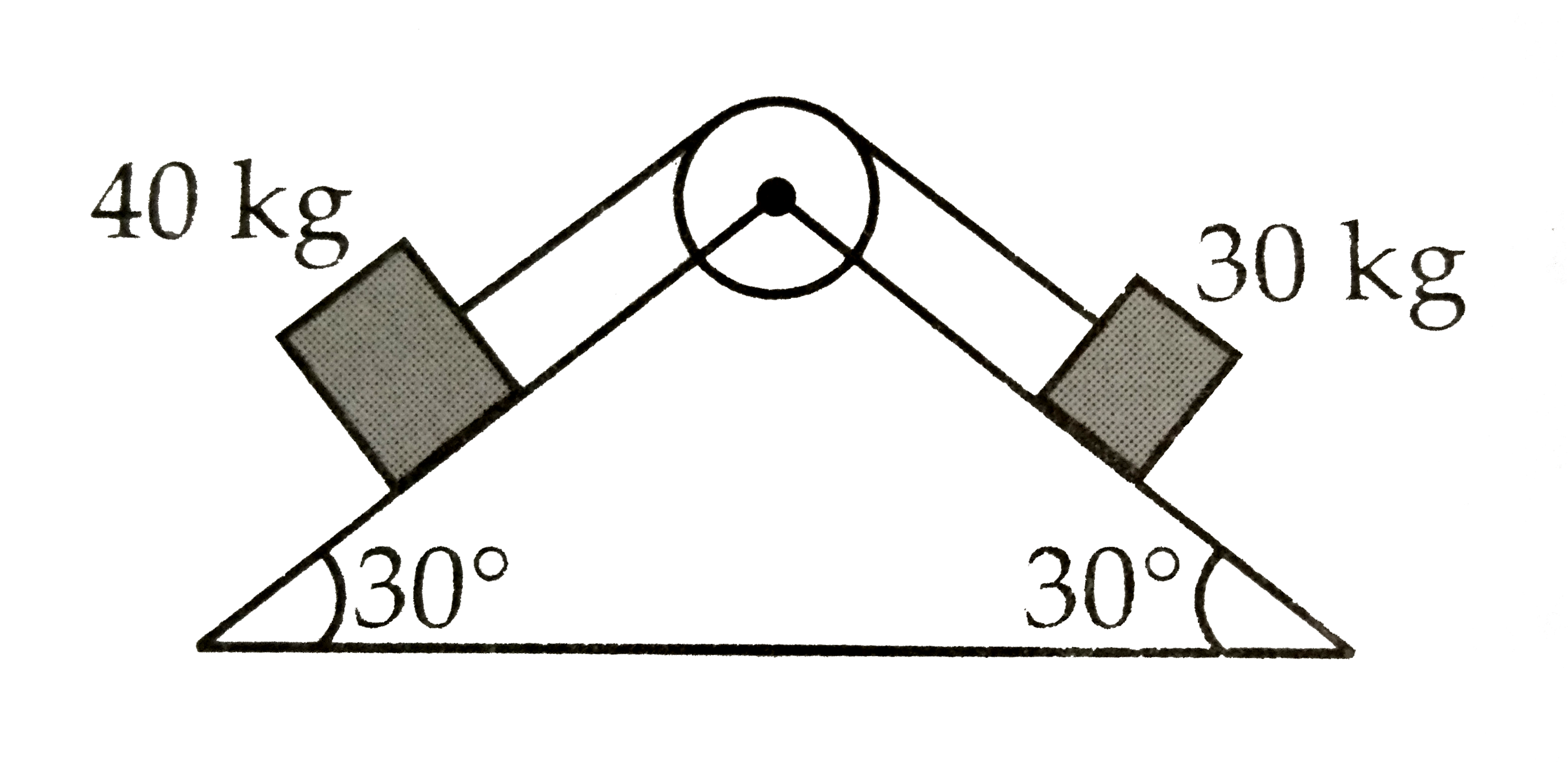
View SolutionA block of mass m slides down along the surface of the bowl from the rim to the bottom as shown in fig. The velocity of the block at the bottom will be-
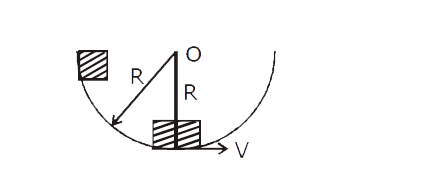
View Solution
Knowledge Check
A light in extensible thread passes over a small frictionless pully. Two blocks of masses m=kg and M=3kg respectively are attached with the thread as shown in the fig. The heavier block rests on a horizontal surface. A shell of mass 1kg moving upward with a velocity 10m/s collides and sticks with the block of mass 'm' as shown in the fig at t=0. If the long inclined plane is smooth.
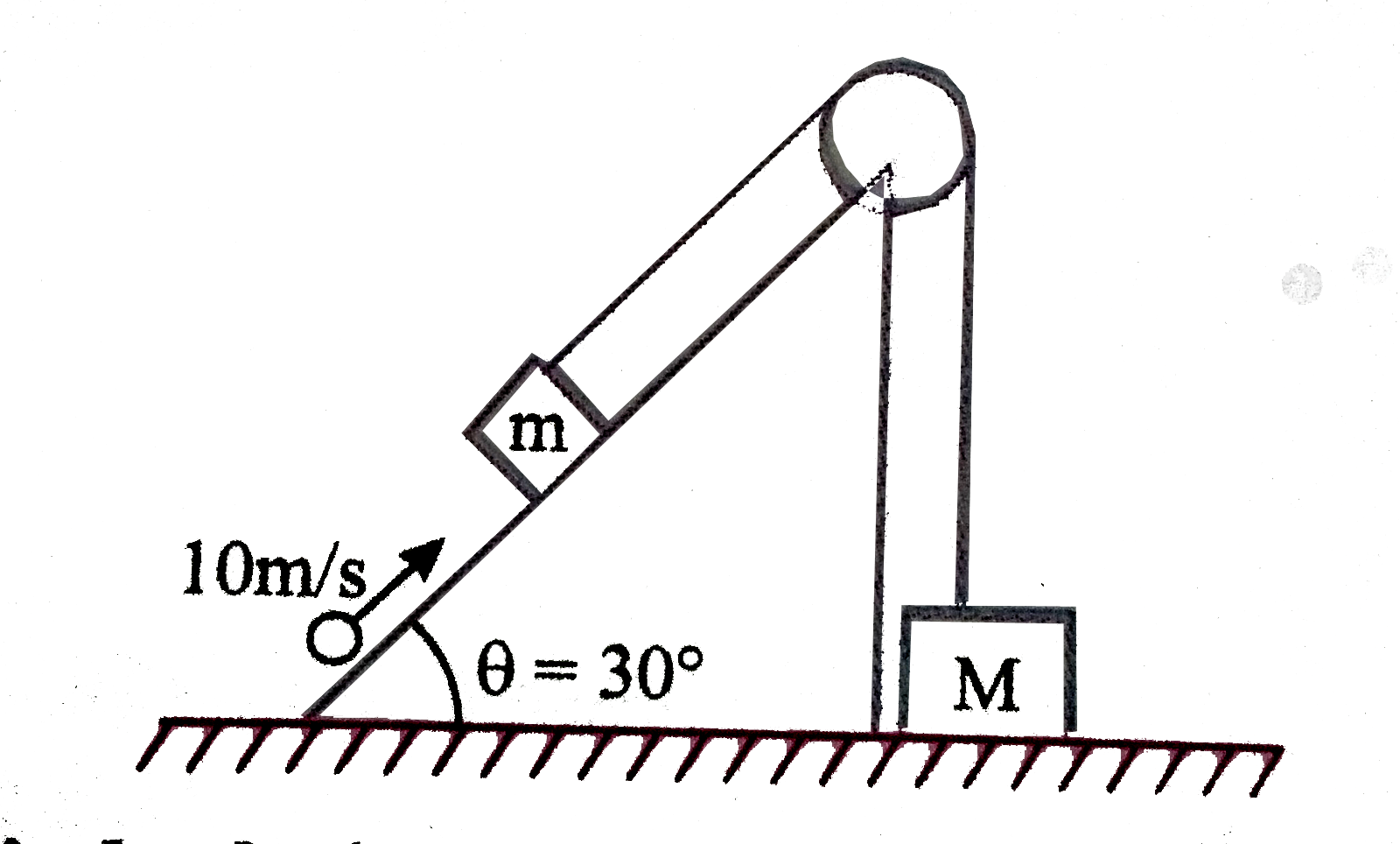
Find the maximum height ascended by 'M'A14mB12mC1mD16mA light in extensible thread passes over a small frictionless pully. Two blocks of masses m=kg and M=3kg respectively are attached with the thread as shown in the fig. The heavier block rests on a horizontal surface. A shell of mass 1kg moving upward with a velocity 10m/s collides and sticks with the block of mass 'm' as shown in the fig at t=0. If the long inclined plane is smooth.
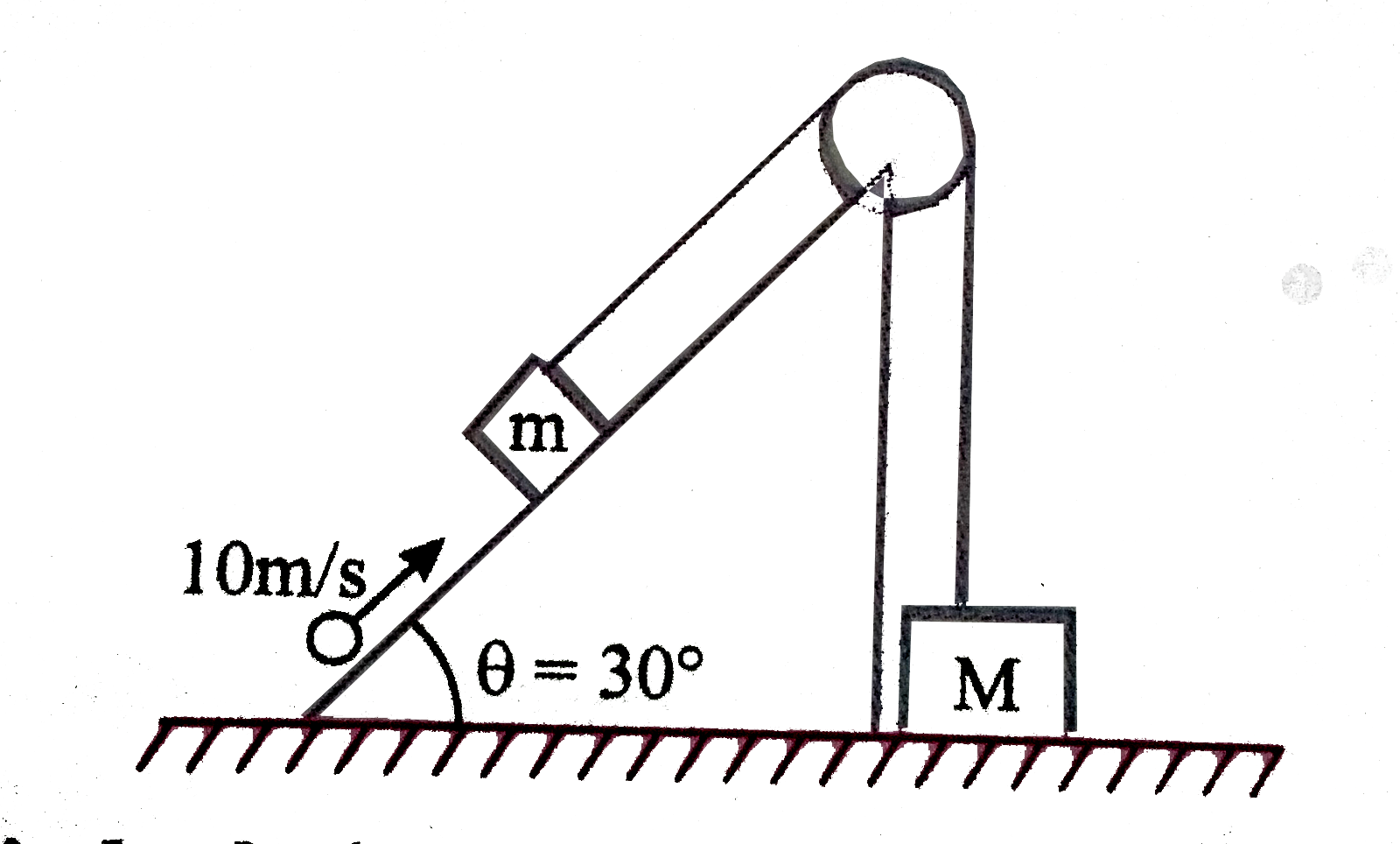
Find the total time T at that instant of maximum height ascended by MA72sB52sC32sD12sA light inelastic thread passes over a small frictionless pulley. Two blocks of masses m = 1 kg and M = 3 kg, respectively, are attached with the thread and heavy block rests on a surface. A particle P of mass 1 kg moving upward with a velocity of 10ms−1 collides with the lighter block and sticks to it. The speed of the bigger block just after the string is taut will be [g=10ms−2]
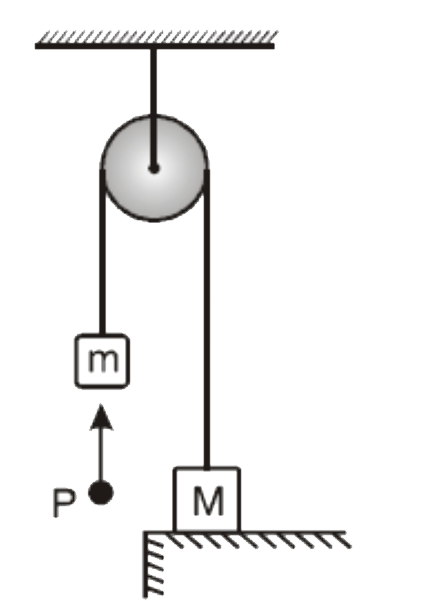 A2.5ms−1B4ms−1C5ms−1D2ms−1
A2.5ms−1B4ms−1C5ms−1D2ms−1
A block of mass m moving with a velocity v0 collides with a stationary block of mass M to which a spring of stiffness k is attached, as shown in Fig. Choose the correct alternative(s)
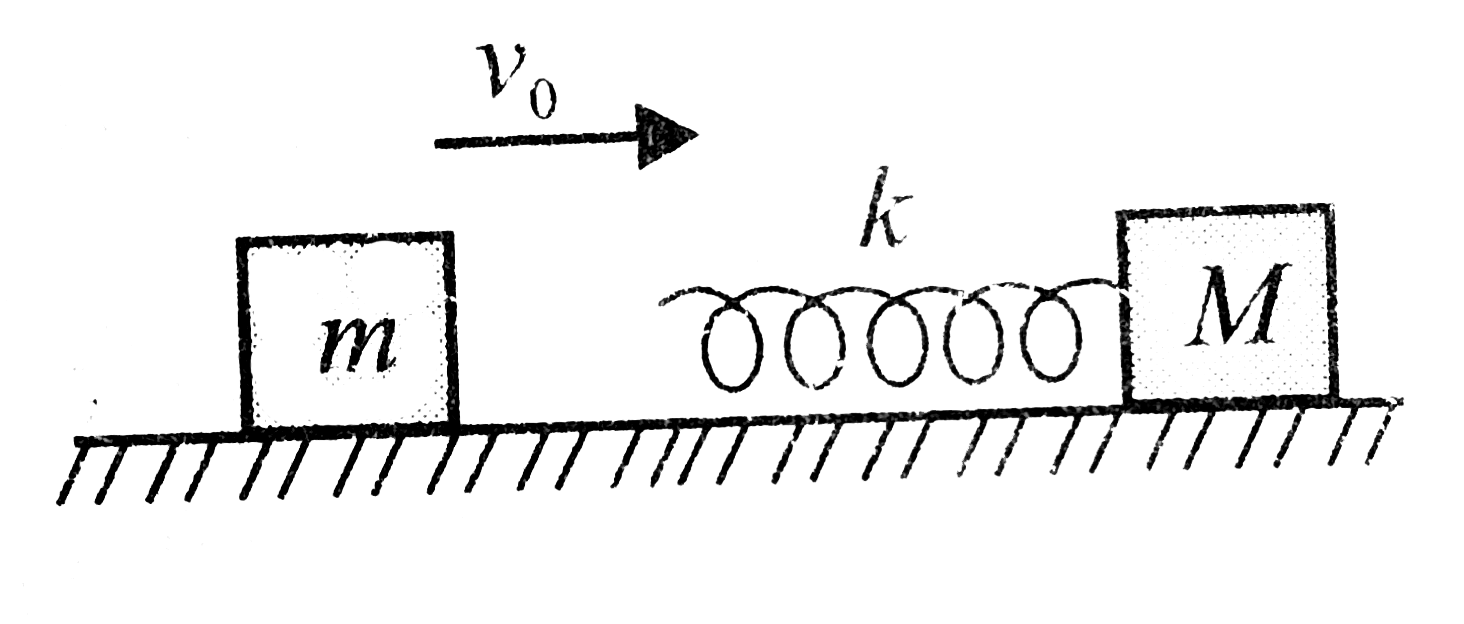
View SolutionTwo blocks of masses 1 kg and 2 kg are placed in contact on a smooth horizontal surface as shown in fig. A horizontal force of 6N is applied on a 1-kg block. Find the force of interaction of the blocks.
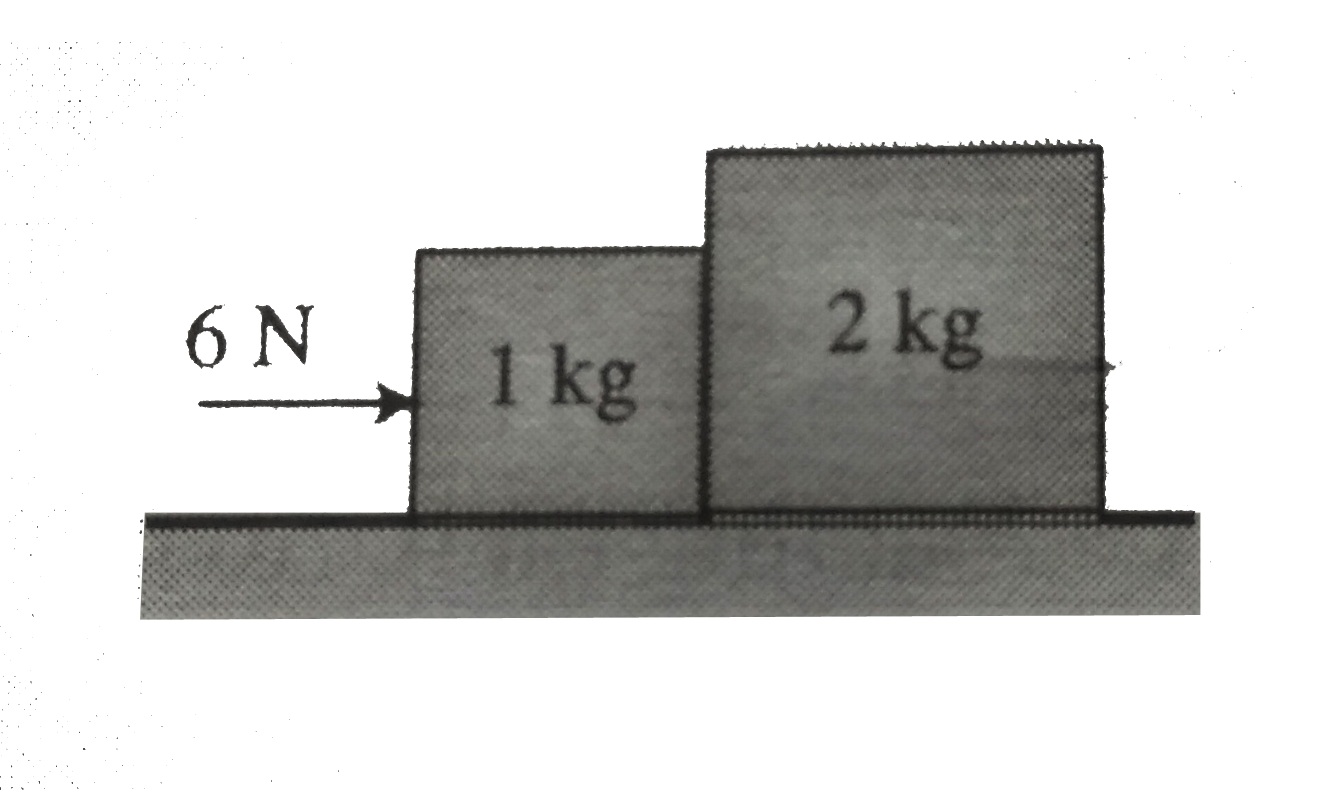
View SolutionA block of mass √3kg rests on a horizontal frictionless surface. What will be the acceleration of the block if it is subjected to two forces as shown in the figure.
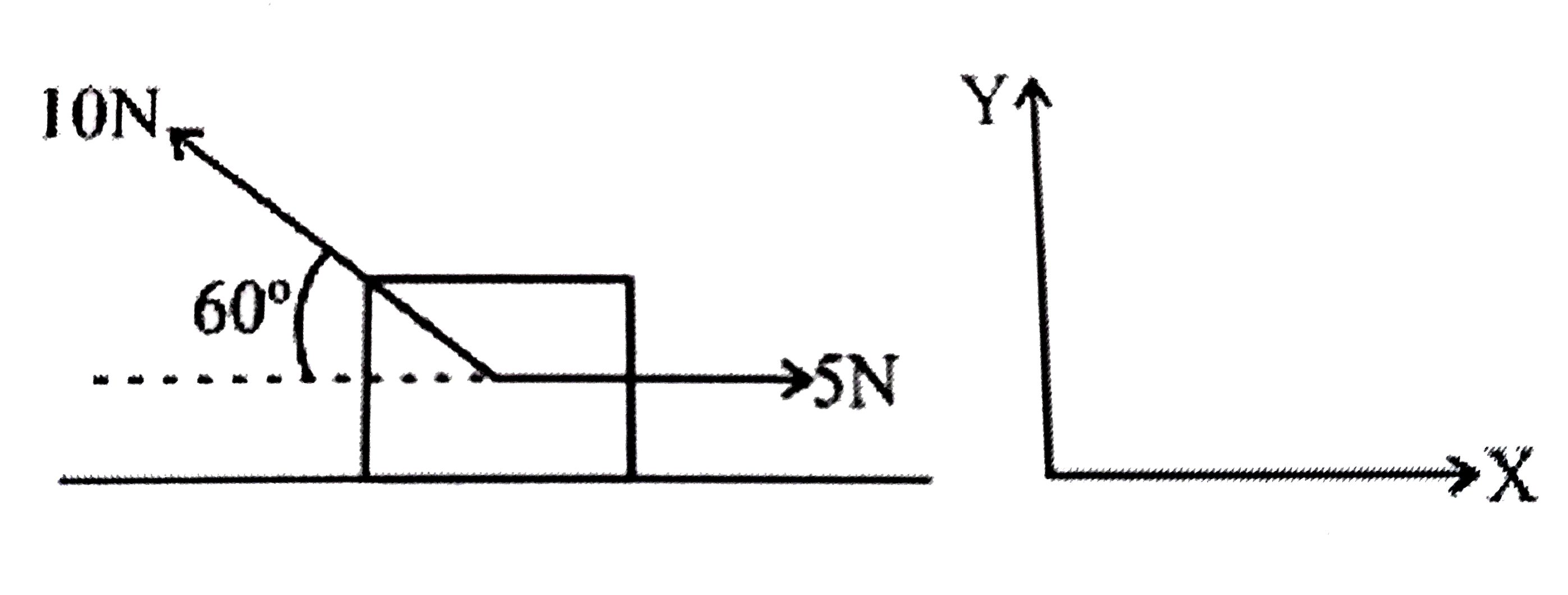
View SolutionIn the shown figure both blocks are in equilibrium m=1 kg. a bullet of mass m moves with velocity 10m/s and get embedded into the block A, then just after collision :

View SolutionTwo block of masses 10 kg and 4 kg are connected by a spring of negligible mass and placed on a frictionless horizontal surface. An impluse given a velocity of 14 m/s to the heavier block in the direction of the leghter block. The velocity of centre of mass is :
View Solution
